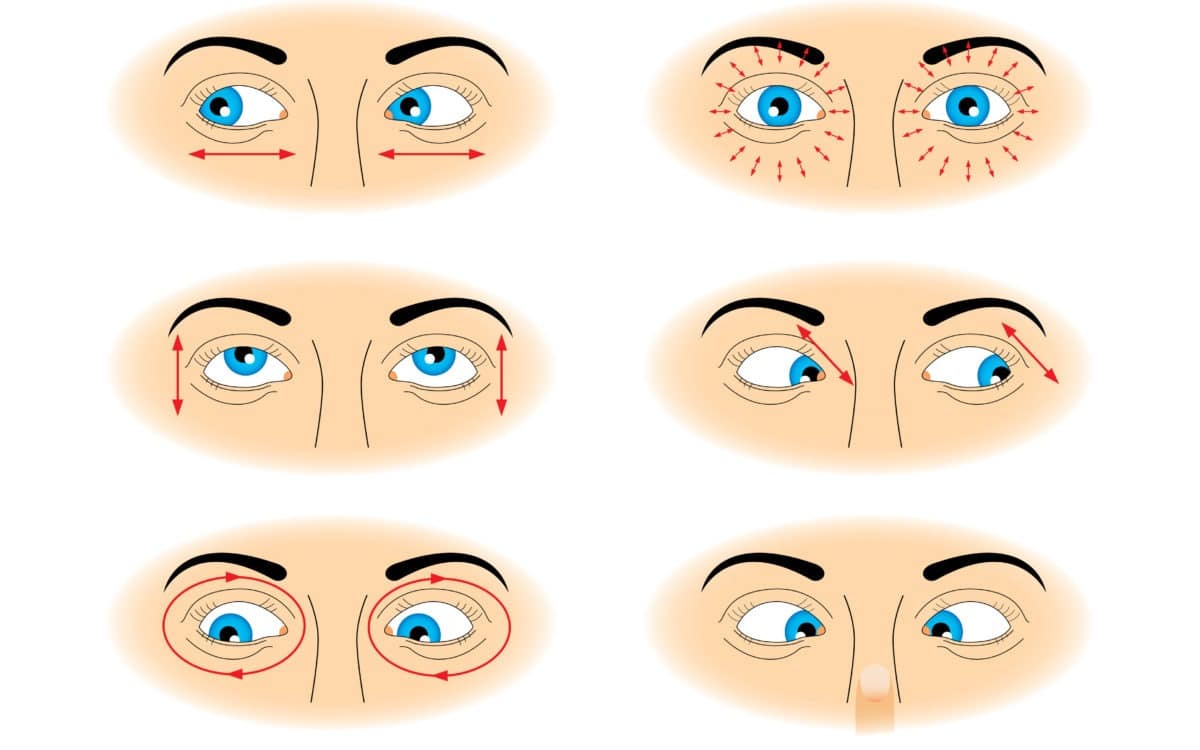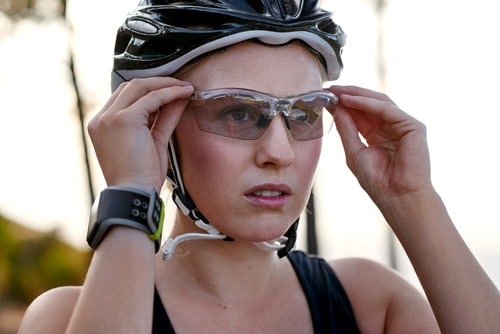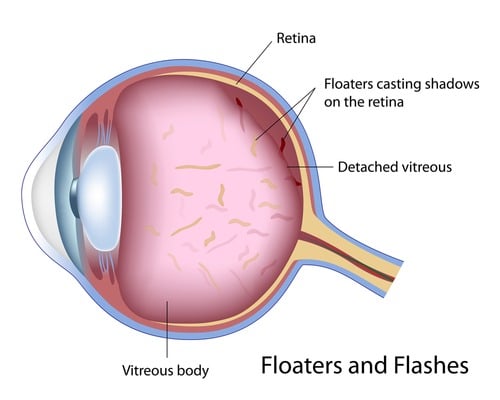Vision Therapy Exercises You Can Try at Home
Looking for eye exercises to improve vision naturally? Find six effective eye exercises for better vision from the eye experts at iCare Vision.
Vision Therapy Exercises You Can Try at Home
When you hear the phrase optimal vision, it means more than 20/20 vision. We depend on our eyes for almost everything we do. Optimal vision requires eyesight, visual pathways, and the brain to work in tandem.
For some individuals, this process is disrupted and, as a result, a vision issue or reading and learning difficulty can emerge.
Vision therapy can prove to be effective at treating several visual problems and improving visual skills for adults and children.
For vision issues that glasses, contacts or surgery can’t treat alone, many turn to vision therapy exercises.
Do you think you or your child would benefit from this type of physical therapy for the eyes and brain?
Keep reading to learn more about vision therapy and specific exercises to improve vision.
What You Need to Know About Vision Therapy
Vision therapy is a non-invasive, drug-free therapeutic program of vision procedures that are strictly supervised by an optometrist.
The goal of vision therapy is to help individuals achieve clear, comfortable vision, improve fundamental visual skills (especially those that are critical to the reading and learning process), and alter how visual information is processed or interpreted.
Here’s what else you need to know:
Vision therapy is:
- Tailored to meet a patient’s specific visual needs
- Typically conducted in-office once or twice a week
- Engaging, where doctor and patient work through visual activities designed to strengthen the visual system
- Often supplemented with at-home exercises to be completed in between vision therapy appointments
Before we discuss eye exercises to improve vision, it’s important to note that a comprehensive eye exam must come before a vision therapy program begins and at-home eye exercises for better vision can take place.
During the examination, your doctor will thoroughly assess your eye health and will be able to tell you if you’re a good candidate for vision therapy. This initial step is vital as to ensure you or your child are not contending with an undiagnosed vision problem that needs more specialized treatment and attention.
Who Benefits the Most from Vision Therapy Exercises?
Vision therapy has helped individuals who live with certain visual challenges, neurological disorders, or have experienced vision-threatening trauma to the nervous system.
Specific visual conditions that can improve with consistent vision therapy exercises include:
- Crossed Eye (Strabismus)
- Lazy Eye (Amblyopia)
- Double Vision
- Depth Perception
- Convergence Insufficiency
- Eyestrain/Stress-Induced Vision Issues
- Neurological Ailments, such as traumatic brain injuries, strokes, multiple sclerosis, cerebral palsy, whiplash and developmental delays
Unfortunately, only about 5% of eye doctors conduct the specialized tests indicating that you may make a good candidate for vision therapy. Therefore, about 25% of the population are not aware they have a fixable vision problem. If you or your child are having trouble reading, driving or engaging in your favorite hobby, consider having a conversation with your eye doctor to learn more about vision therapy.
Additionally, athletes have been known to utilize vision therapy exercises to improve essential vision skills, such as peripheral awareness, eye-hand coordination, eye teaming, visual reaction time, and more.
6 Effective Eye Exercises for Better Vision
Once your doctor has examined your eyes and vision health and has determined you to be a good candidate for vision therapy, you or your child may be eager to get started with exercises to improve vision.
Your optometrist will undoubtedly have several effective at-home exercises to give you. You can also review and practice the following exercises for more variety or to get a head start:
1. Sunning.
This exercise can lead to improved vision in low and high light environments by gently and safely allowing the pupillary capacity to adjust to light through this exercise.
How to do the exercise:
- Choose a sunny to partially sunny day. If it’s winter time, find a window in your home that allows the light to spill in.
- Sit in a chair or on the ground and close your eyes.
- Allow your face to become completely engulfed in sunlight.
- If you are outside, tilt your face upward, as to face the sun directly.
- Take several deep breaths and ensure you’re in a calm state before you begin the exercise.
- When you’re ready to begin, gently move your head from side to side, so your chin is over your shoulder on each turn.
- Do this seven to ten times and then rest for 15 seconds with your eyes remaining softly closed, facing the sun. Repeat this pattern three times and complete this activity three times a week.
As you move your head from side to side, your pupils will expand and contract. This is what will allow the pupillary capacity to better adjust to light and, thus, improve vision.
*It is crucial that you or your child keep the eyes closed during the entire exercise. Looking directly into the sun can damage vision.
2. Palming.
Tension is uncomfortable and unhealthy. When it comes to our vision, it is the number one cause of vision loss or vision issues. Palming is a highly effective way to reduce undesired pressure and strain in our eyes and entire body.
How to do the exercise:
- Find some uninterrupted time and sit in a quiet, peaceful room with a table.
- Take several deep breaths to relax and softly close your eyes.
- With your eyes closed, rub your palms together until they become warm.
- Rest your elbows softly on the table in front of you as a support and gently place each palm over each eye lid so you cannot see anything but complete darkness.
- Allow yourself to soak in the warmth of your palms through your eyes; feel your eye muscles relaxing.
- Remain in this position until the warmth of your palms have subsided.
- Keep your eyes closed and rub your palms together until they become warm again.
- Repeat this process at least three times.
Tension in our eyes creates a plethora of issues. Tension puts a substantial amount of strain on the optic nerve, leads to the degradation of our corneas and maculae, increases eye pressure, and can be responsible for headaches and migraines.
Without even realizing it, you could be causing tension and strain within your eyes. Through palming, you’re giving your eyes the relaxation and rest they need, and with consistent practice of palming, almost all eye issues can be improved.
Directional Eye Exercises to Improve Vision
Eye exercises that ask you to move your eyes in several different directions is one of the most basic ways to improve focusing skills, develop better eye movements, and stimulate the vision center in the brain. Here are two different directional eye exercises:
3. Sideways Viewing.
- Sit on the floor with your legs straight out in front of you.
- With your fists closed, lift your arms so they are straight out in front of you, in line with your shoulders. Keep your thumbs pointing upward.
- Close your eyes and take several deep breaths and focus on relaxing your eyes and entire body.
- Open your eyes when you are ready to begin.
- Pick an object or a spot on the wall that’s straight in front of you, level with your eyes.
- Keep your head in this fixed position and your spine straight.
- Focus on each of the following, one right after the other, by shifting only your vision (not your head):
- The space in between the eyebrows
- Your left thumb
- The space in between the eyebrows
- Your right thumb
- The space in between the eyebrows
- Your left thumb
- The space in between the eyebrows
- Your right thumb
- Repeat this eye exercise approximately 10 to 20 times.
- When you are done, close your eyes and allow them to rest.
4. Up and Down Viewing.
- Sit on the floor with your legs straight out in front of you.
- Place both fists on your knees.
- Close your eyes and take several deep breaths and focus on relaxing your eyes and entire body.
- Open your eyes when you are ready to begin.
- Pick an object or a spot on the wall that’s straight in front of you, level with your eyes.
- Keep your head in this fixed position and your spine straight.
- Position your thumbs upward.
- Look at your right thumb.
- Slowly raise the right arm from the knee until it is out of your eyesight.
- Follow the motion of the right thumb upwards with your eyes while keeping your head completely still in a fixed position.
- When the thumb is out of eyesight, slowly bring it back down to the knee (starting position) while keeping the eyes focused on it.
- Repeat this same process with the left thumb.
- Complete this exercise five times with each thumb.
- When you are done, close your eyes and allow them to rest.
5. Rotational Viewing.
- Sit on the floor with your legs straight out in front of you.
- Close your eyes and take several deep breaths and focus on relaxing your eyes and entire body.
- Open your eyes when you are ready to begin.
- Pick an object or a spot on the wall that’s straight in front of you, level with your eyes.
- Keep your head in this fixed position and your spine straight.
- Place the left hand on the left knee.
- Hold the right fist above the right knee, in line with the right shoulder. Keep the thumb pointing upwards and elbow straight.
- Focus your eyes on the right thumb while keeping your head still.
- Make a circle with the thumb, keeping the elbow straight.
- Repeat this exercise five times on the right side, each in clockwise and anti-clockwise direction.
- Repeat the process five times with the left thumb.
- When you are done, close your eyes and allow them to rest.
6. Near and Distant Viewing.
This eye exercise will help improve or maintain far and near vision. You can do this exercise inside or outside, sitting or standing.
- Place an object about 10 inches from your eyes and try to focus on it for 10-15 seconds.
- Next, place the object about 10 feet away and focus on it for 10-15 seconds.
- Finally, place the object about 10 inches from your eyes again and try to focus on it for 10-15 seconds.
- Alternate your near and far object focus five times.
- Complete one entire cycle three time.
Let’s See If You’d Benefit from Visual Therapy
When the entire visual system works in harmony – moves, aligns, fixates, and focuses together – an individual begins to see the world in a whole new way.
Let the eye experts at iCare Vision assess your eyes and work with you to determine the best therapy or treatment for your unique eye concerns.
An eye examination is a quick and painless process.








